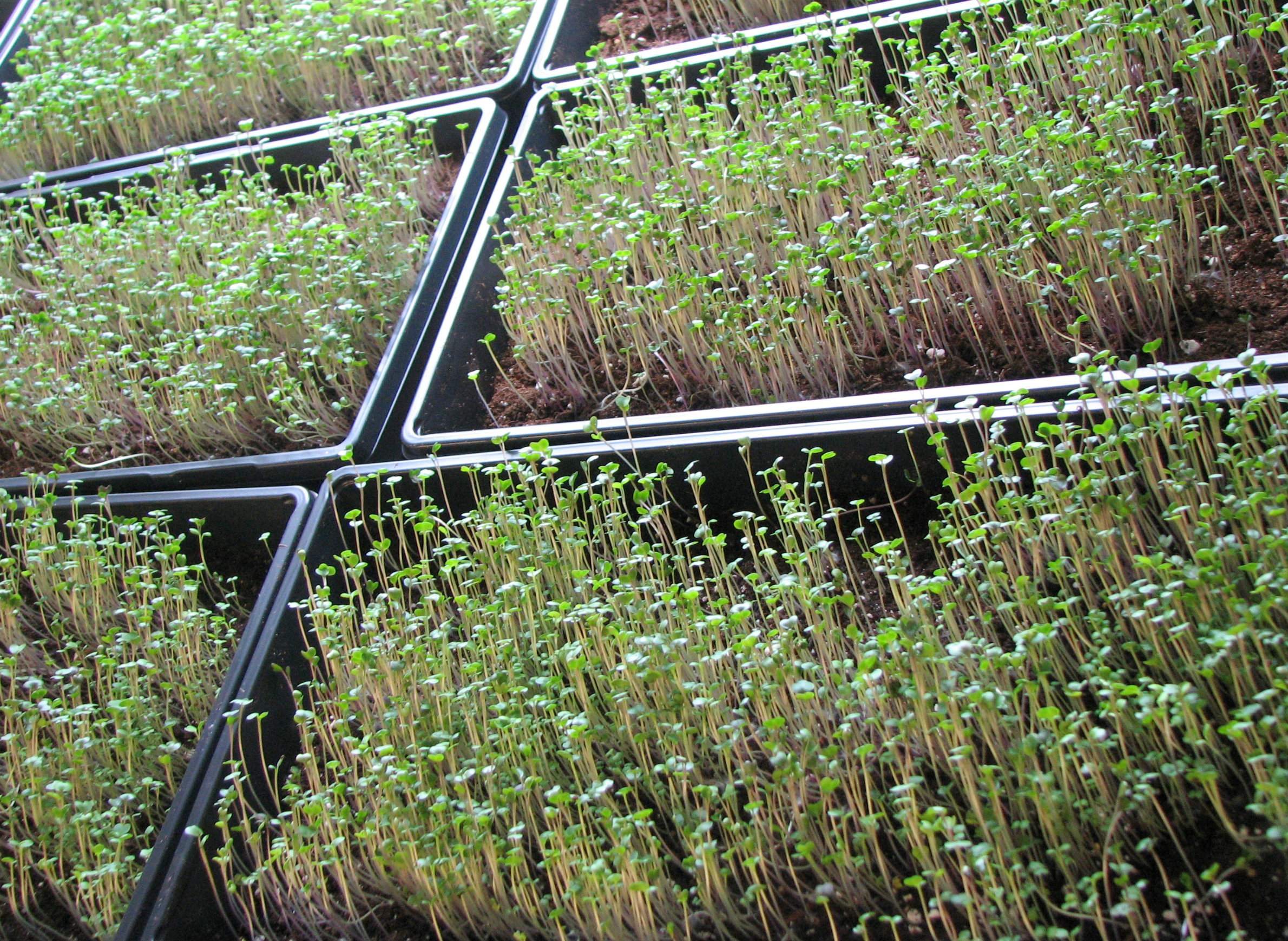
Microgreens Are As Easy To Grow As They Are Nutritious

Microgreens are simple and easy to grow indoors in winter. A greenhouse or special grow lights aren't necessary for growing these plants, though. Rather, a small space near a bright sunny window, a couple of shallow trays and potting mix is all that's needed.
Seedlings of a variety of vegetables, microgreens add unique flavor, texture, nutrition, and colors to salads and other dishes. A 2012 research study found that vitamin and nutrient contents in sprouting greens like red cabbage, cilantro, amaranth and radish microgreens are so rich that they are comparable to fully grown vegetables.
Microgreens are broadly grouped into fast-growing and slow-growing varieties. Fast growers take about 10-15 days to reach harvesting stage, while slow growers require about 16-25 days for harvesting. Common fast-growing greens include red cabbage, Chinese cabbage (Kogane), kale (Red Russian), kohlrabi (purple), mustard (Golden Frills, Garnet Giant, Scarlet Frills, Ruby Streaks), pak choi (Rosie), cress (Persian, Cressida), radish (Daikon), spinach and lettuces. Common slow-growing greens include amaranth (Garnet Red), arugula, carrot, chard (Rudy Red), mustard (Red Giant), pak choi (Red Pac), basil (Red Rubin, Lemon, Italian Large Leaf), cilantro and fennel (green).
Based on their growth rates, the seeding times of these varieties can be scheduled individually. Similarly, greens can be blended after harvest to desired flavor. Microgreens mixes can be used in a variety of cuisines and dishes.
To plant a microgreen garden, a shallow, flat plastic container or seed tray that has adequate drainage holes should be used. When reusing old flats, they should be disinfected with a combination of 10 percent bleach and water, and allowed to air dry for few hours.
A seed tray should be filled with moist potting mix (largely composed of peat) to about a half inch below the rim, or about 1.5 to 2 inches deep in a shallow plastic container. Seeds can be scattered densely or with a spacing of 0.25 to 0.5 inches apart, and covered lightly with potting mix. Using a spray bottle, the media should be moistened and covered with plastic wrap or a clear dome or to increase humidity around the seeds. Planted containers should be placed near a bright sunny window or set under fluorescent bulbs for 16 hours.
Once the seeds start to germinate, the dome or wrap should be removed. As the seedlings start to grow, it's best to check the soil moisture once a day. The bottom of flats should be watered, and seedlings can be misted with a spray bottle.
Microgreens can be harvested when they are 2 inches tall with a clean scissors to snip the base of stems. Lettuce and spinach can be allowed to re-sprout for a second harvest. Once harvested, greens can be refrigerated for 4-5 days in containers.
Vijai Pandian is a horticultural agent and educator for the University of Wisconsin-Extension Brown County.


